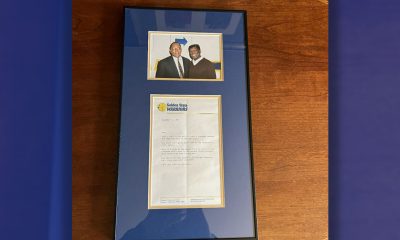Sports
KG Returns to Minnesota as Player, Wants to Stay as Owner

Minnesota Timberwolves’ Kevin Garnett, right, talks with head coach Flip Saunders after his first practice on his return to his former team that originally drafted him out of high school, Tuesday, Feb. 24, 2015, in Minneapolis. Garnett waived his no-trade clause with the Brooklyn Nets to return to Minnesota. (AP Photo/Jim Mone)
JON KRAWCZYNSKI, AP Basketball Writer
MINNEAPOLIS (AP) — Kevin Garnett never wanted to leave Minnesota when the Timberwolves traded him to Boston nearly eight years ago, never wanted to jump from a sinking Celtics ship before Paul Pierce convinced him to follow him to Brooklyn two years ago.
And he sure didn’t feel great about uprooting his family in the middle of a season when the prospects first arose to return to his beloved ‘Sota last week.
Sitting at his Malibu home over the All-Star break, the only true superstar in Wolves history thought long and hard about what that move would mean. He thought about mentoring Ricky Rubio and Andrew Wiggins.
He thought about going back to the state where he was drafted and where he met his wife, setting down roots and one day following stars such as Michael Jordan and Magic Johnson into ownership. He thought about restoring a relationship with a franchise that was tattered when he was traded.
He was born in South Carolina, became a high school sensation in the Chicago area and a champion in Boston.
But for him, Minnesota will always be home. And in the end, that lure and the possibility of a much greater role down the road proved too great to resist.
“It’s perfect,” Garnett said on Tuesday at a re-introductory news conference that came five days after he was acquired from Brooklyn in a trade. “If you have a story, this is a fairy tale. This is a perfect ending to it. This is how you want to do it.”
For Garnett, it actually may be the beginning.
He made the jump straight from Farragut Academy to the NBA in 1995, a groundbreaking move at the time that ushered in a new era and ultimately compelled the league to change its rules to require players to be out of high school for at least one year before being eligible to be drafted.
He spent 12 years in Minnesota, growing from a skinny, 19-year-old rookie into a two-way force and one of the best power forwards in league history.
He made 10 All-Star teams, was the MVP in 2004 and led the Wolves to the only eight playoff appearances in franchise history, including a stirring run to the Western Conference finals in his MVP season.
“He’s our history. He’s it. He is the face of the franchise,” said Sam Mitchell, a former teammate and now an assistant coach on the team.
“So to bring him back and these guys get to experience and be around him and learn from him and say, ‘I spent time with Kevin Garnett’ it’s going to enhance their growth by leaps and bounds.”
The Wolves fell on hard times after losing to the Lakers in 2004 and former GM Kevin McHale and Glen Taylor, who still owns the team, decided to trade Garnett and start a massive rebuilding project in 2007. Garnett saw it as the organization turning its back on him, and relationships were frayed.
“He’s the most loyal human being alive,” Clippers coach Doc Rivers said. “He’s going home. It’s where started and it’s where he’s going to end. It says a lot about him.”
He maintained a home here, but really only kept in close contact with Flip Saunders, his coach for 10 years who returned before last season as president of basketball operations.
“I obviously won’t forget certain things, but it’s time to move on from certain things,” Garnett said on Tuesday, adding that his relationship with McHale, who now coaches the Houston Rockets, has improved over the years.
He said he “always had an understanding” with Taylor.
“I wouldn’t have come back if the relationship was to the point where it’s not … reachable or something like that,” Garnett said.
“I would not have come back if it wasn’t a chance that I can refurbish it or it was going to get better. I’m looking forward to this opportunity, and I’m embracing this change.”
Coming back not only gives the 38-year-old a chance to wear the No. 21 again and play for another year or two. But it also appears to be the first step toward putting a group together to buy the Wolves from Taylor.
“I wasn’t really happy in how I left here. My goal since I’ve been in the league was to win a championship and I wanted it to be here in the Twin Cities,” Garnett said.
“I’ve always wanted that. I wanted to be a part of that the first time this franchise went over the hump and I got a taste of that in the Western Conference (finals). I’ve been thirsty ever since. Once you get that taste, you never lose that.”
For now, he’s still a player. And one Saunders believes can make a lasting impact, even if his MVP days are behind him.
Garnett practiced with the Timberwolves for the first time on Tuesday, and he wasted little time making his presence felt in front of his new teammates.
He surprised the 19-year-old Wiggins by getting to the gym at 9:30 a.m., then barked at big man Nikola Pekovic during practice to set an early tone of intensity.
“He yelled at Pek twice already when I think nobody in his career yell at him to run back on defense, so that’s good,” Rubio said. “Everybody listens and everybody respect him. He’s doing everything it takes to get better.”
Mitchell was that player for Garnett back in 1995. Twenty years later, it’s KG’s turn.
“I know these are the declining days of my playing days, but I think I have so much more to bring. This is the perfect situation,” Garnett said. “This is full circle right here.”
Copyright 2015 The Associated Press. All rights reserved. This material may not be published, broadcast, rewritten or redistributed.
Activism
McClymonds High Names School Gym for Star Graduate, Basketball Legend Bill Russell
William “Bill” Felton Russell was born on Feb. 12, 1934, and died on July 31, 2022. He achieved fame as a U.S. professional basketball player who played center for the Boston Celtics of the National Basketball Association (NBA) from 1956 to 1969. He was the centerpiece of the Celtics dynasty that won 11 NBA championships during his 13-year career.
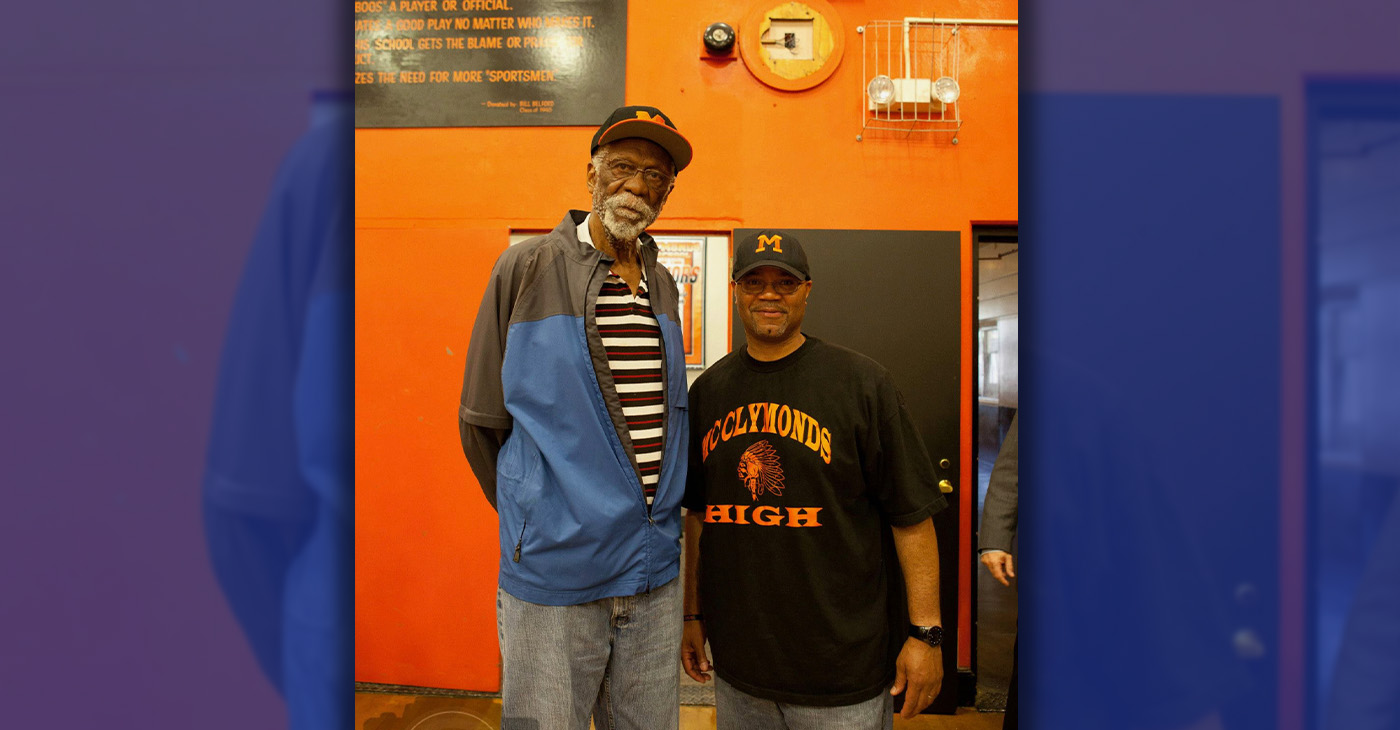
By Ken Epstein
West Oakland’s McClymonds High School, “the School of Champions,” this week named the school’s gymnasium in honor of one of its most famous graduates, basketball legend Bill Russell (class of ’52).
William “Bill” Felton Russell was born on Feb. 12, 1934, and died on July 31, 2022. He achieved fame as a U.S. professional basketball player who played center for the Boston Celtics of the National Basketball Association (NBA) from 1956 to 1969. He was the centerpiece of the Celtics dynasty that won 11 NBA championships during his 13-year career.
Russell is widely known as one of the greatest basketball players of all time. In 2011, he received the Presidential Medal of Freedom, the country’s highest civil honor, from President Barack Obama for Russell’s contributions to basketball and the Civil Rights Movement.
The McClymonds’ naming ceremony was held on Wednesday, the same day as Russell’s birthday. Oakland leader Bill Patterson, a longtime friend of Russell’s, was scheduled to cut the ribbon at the reopening of the gym, which had been closed for several months for renovation. Russell’s daughter Karen was scheduled to attend the ribbon cutting.
Russell’s name and signature are now printed on the gymnasium floor.
Patterson was working at DeFremery Park when he met Russell. “I befriended him as a boy and during his years at University of San Francisco” said Patterson. “We stayed friends for the rest of his life.”
Said McClymonds Principal Darielle Davis, herself a McClymonds graduate, “We are excited to honor Bill Russell for his sports accolades and because he broke color barriers. He is part of our legacy, and legacy is really important at McClymonds.”
Brian McGhee, community schools manager at McClymonds and former football player at UC Berkeley, said that Russell meant a lot to him and others at the school. “He was a beacon of light and hope for West Oakland,” he said. “He did a lot for sports and for civil rights.”
Starting in 2018, Ben “Coach” Tapscott worked with Patterson and other McClymonds grads, community members, and former coaches to encourage the Oakland Board of Education to endorse the naming of the school gym, which finally happened recently.
“We worked hard to make this happen,” said Tapscott. “He’s an important part of McClymond’s history, along with a lot of other famous graduates,” he said.
Activism
OPINION: Politics, Football and Identity in Trump’s America
If you haven’t noticed, all Americans are engaged in an even bigger game that means so much more than the Super Bowl. Our democracy is falling apart.
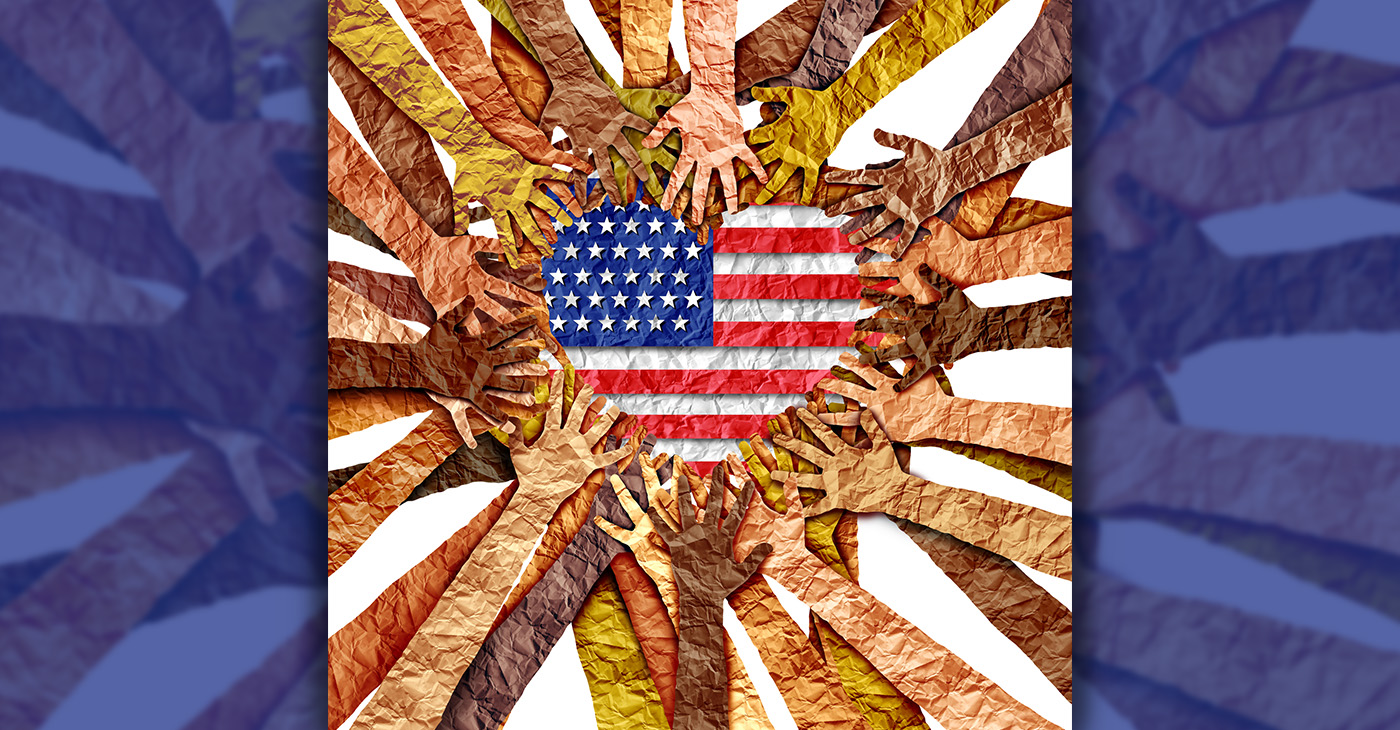
By Emil Guillermo
Two Filipino American stories made headlines recently.
First, Nikko Remigio, the Filipino and African American kick returner for the Kansas City Chiefs, did not win Super Bowl LIX.
The other, Alameda’s Rob Bonta said no to running for governor. I don’t blame him. It’s not like a mass of people wanted him to run.
But I did.
Whenever there is a Filipino American in a place you don’t expect, I’m rooting for that person.
As California’s Attorney General, Bonta is probably the most active defender among Blue States pushing back against Trump’s Extreme-Right agenda.
I’d like to Bonta run for California’s top job, but he’s better off waiting in line. The Democrats need a spot for Kamala Harris, and Bonta not running obliges the hierarchy.
History can wait. Bonta’s just 52.
Harris has held off speculation of her next move, saying she just moved back to the state. But it seems governor is the path for her.
For now, Bonta needs to continue taking the fight to Trump in the courts.
Football and Identity Politics
My dad, whose birthday would have been Super Bowl weekend, came to the US in 1928 as a colonized Filipino, an “American National,” where he couldn’t be a citizen, vote, own property or even marry the person he wanted.
Not if they were White.
Still, he believed in America. He never gave up.
Sort of like Nikko Remigio.
My dad would have loved Nikko.
If you haven’t noticed, all Americans are engaged in an even bigger game that means so much more than the Super Bowl. Our democracy is falling apart.
You want to get passionate about Eagles and Chiefs?
Let’s be passionate about our Founding Fathers, too.
Nikko didn’t change the game. He touched it three times and provided more yards than all of KC’s running backs.
That’s all I needed to see.
He’s our Filipino guy.
Detractors may call it “identity politics.”
People don’t seem to understand the fight for visibility. To be recognized. To be seen. It’s all wrapped up in the big idea of Civil Rights.
I was nowhere near as good as Nikko when I played. But when you are blessed to play football, you play your hardest.
For me, that was when I was 12 and 13 playing Pop Warner football in San Francisco. I was MVP for my team as a running back.
But I was ashamed of my dad. He wasn’t like the other dads. And I remember going to the team banquet to retrieve my trophy alone.
I didn’t realize it probably meant more to him than I thought.
I wish I had shared my MVP moment with him like Nikko shared his joy with his dad, Mark, born in Seattle to two Filipino immigrants, and his mom, whose mixture of Black and White made Nikko the picture of diversity.
Filipino American and Black and White at the Super Bowl.
But don’t forget, there is one game bigger.
The Super Bowl for Democracy. We’re battling for it every day Trump pushes a cockamamie idea that shakes the foundation of our Democracy.
About the Author
Emil Guillermo is an award-winning journalist and commentator. Watch his micro-talk show “Emil Amok’s Takeout/What Does an Asian American Think?” on www.YouTube.com/emilamok1 Or join him on http://www.patreon.com/emilamok
Bay Area
Tina Thompson: Champion, Legend, and Pioneer of Women’s Basketball
Known for her signature red lipstick, Thompson displayed confidence and style on the court, becoming an icon both for her gameplay and her individuality. Her ability to score from anywhere on the floor, combined with her defensive prowess, made her one of the league’s most formidable players.
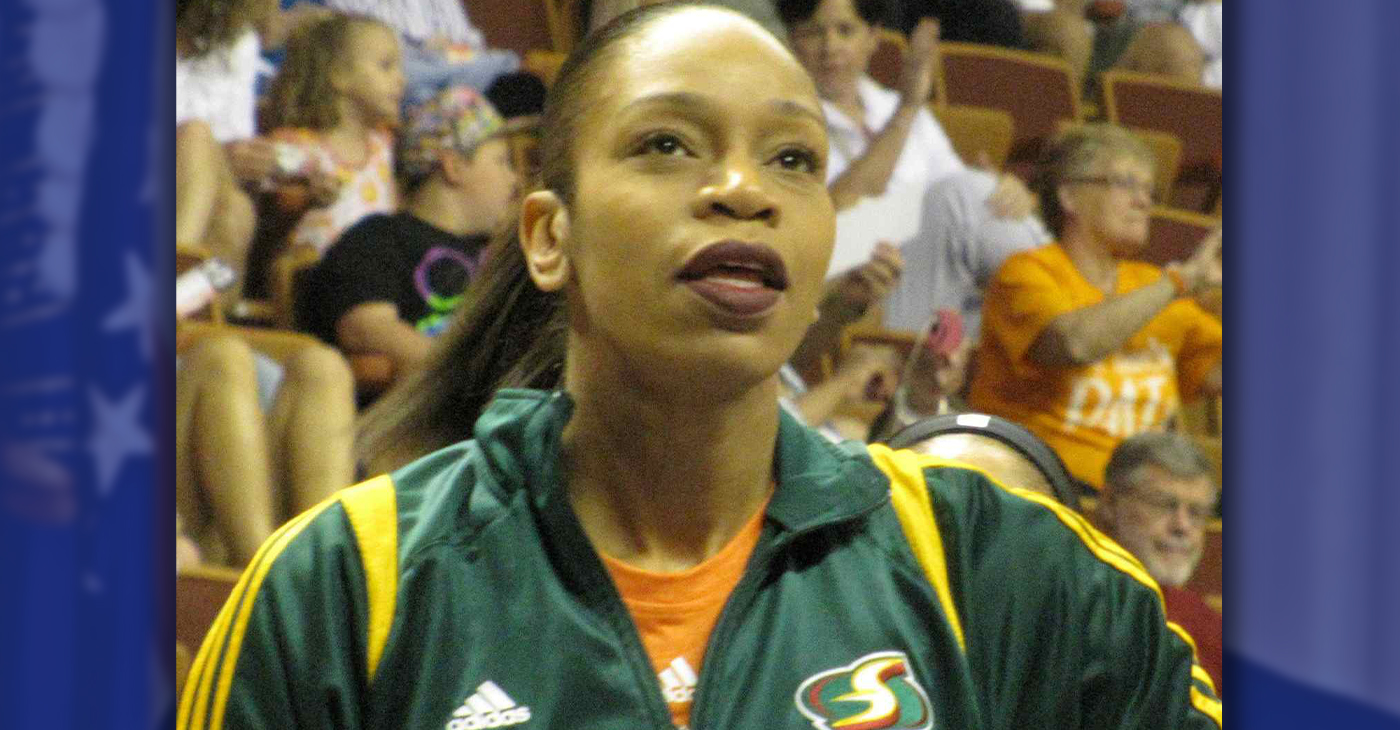
By Tamara Shiloh
The establishment of the Women’s National Basketball Association (WNBA) in 1996 was a turning point for women’s sports, creating a professional platform for female basketball players to showcase their skills at the highest level. Among the trailblazers who helped launch the league, Tina Thompson stands out as the first African American woman drafted into the WNBA.
Tina Thompson was born on February 10, 1975, in Los Angeles, California. Raised in a basketball-loving household, she quickly developed a passion for the game. Thompson improved her skills on the playgrounds of South Central Los Angeles, often playing against boys, which toughened her game and fueled her competitive edge.
She attended the University of Southern California (USC), where she became a standout player for the Trojans. Known for her versatility, scoring ability, and relentless work ethic, she earned All-Pac-10 honors multiple times and cemented her reputation as one of the top collegiate players in the nation.
When the WNBA held its first-ever draft on April 28, 1997, Tina Thompson made history as the league’s first African American player to be drafted. Selected as the first overall pick by the Houston Comets, she joined a team that would go on to dominate the early years of the WNBA.
Tina’s selection was a historic moment, symbolizing the league’s commitment to showcasing diverse talent. As a Black woman in a pioneering role, Thompson carried the hopes of aspiring African American female athletes who dreamed of playing professional basketball.
Tina wasted no time making an impact in the WNBA. As a key member of the Houston Comets alongside legends Cynthia Cooper and Sheryl Swoopes, she helped lead the team to an unprecedented four consecutive championships from 1997 to 2000. The Comets’ dynasty became the gold standard for excellence in the league’s early years.
Known for her signature red lipstick, Thompson displayed confidence and style on the court, becoming an icon both for her gameplay and her individuality. Her ability to score from anywhere on the floor, combined with her defensive prowess, made her one of the league’s most formidable players.
Over a career spanning 17 seasons, Tina established herself as one of the WNBA’s all-time greats. She retired as the league’s leading scorer, a record she held until it was broken by Diana Taurasi. She was a nine-time WNBA All-Star and was named to multiple All-WNBA teams, cementing her status as one of the sport’s legends.
In 2018, Thompson’s contributions to basketball were recognized with her induction into the Naismith Memorial Basketball Hall of Fame. The honor underscored her influence not just as a player, but as a trailblazer for African American women in sports.
After retiring from professional basketball, she transitioned into coaching, using her experience and knowledge to mentor young athletes. She has served as a head coach at the collegiate level, inspiring the next generation of players to pursue excellence both on and off the court.
As a role model and advocate, Thompson has consistently emphasized the importance of education, empowerment, and self-belief. Her story resonates with countless young women who see in her the embodiment of perseverance and success.
Tina Thompson is presently in her third season as an assistant coach at the University of Texas at Austin.
-
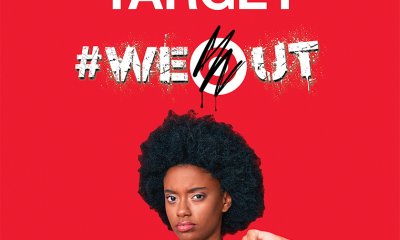
 #NNPA BlackPress4 weeks ago
#NNPA BlackPress4 weeks agoTarget Takes a Hit: $12.4 Billion Wiped Out as Boycotts Grow
-

 Activism4 weeks ago
Activism4 weeks agoUndocumented Workers Are Struggling to Feed Themselves. Slashed Budgets and New Immigration Policies Bring Fresh Challenges
-

 Activism4 weeks ago
Activism4 weeks agoOakland Post: Week of February 26 – March 4, 2025
-

 #NNPA BlackPress4 weeks ago
#NNPA BlackPress4 weeks agoBREAKING Groundbreaking Singer Angie Stone Dies in Car Accident at 63
-

 Arts and Culture4 weeks ago
Arts and Culture4 weeks agoBeverly Lorraine Greene: A Pioneering Architect and Symbol of Possibility and Progress
-

 #NNPA BlackPress4 weeks ago
#NNPA BlackPress4 weeks agoNAACP Legend and Freedom Fighter Hazel Dukes Passes
-

 #NNPA BlackPress4 weeks ago
#NNPA BlackPress4 weeks agoTrump Kicks the Ukrainian President Out of the White House
-

 #NNPA BlackPress4 weeks ago
#NNPA BlackPress4 weeks agoApple Shareholders Reject Effort to Dismantle DEI Initiatives, Approve $500 Billion U.S. Investment Plan










